
World Rabies Day: A Global Call to Action Against a Deadly Disease
Introduction
Every year on September 28, the world unites to observe World Rabies Day, a powerful movement dedicated to raising awareness about one of the deadliest yet preventable diseases. Rabies continues to claim thousands of lives annually, predominantly in vulnerable communities. The significance of World Rabies Day lies in its ability to drive education, action, and collaboration toward eliminating rabies-related deaths.
Understanding Rabies: The Silent Killer
Rabies is a highly fatal viral disease that attacks the central nervous system, leading to certain death once symptoms appear. The virus is primarily transmitted through the bite of an infected animal, commonly a dog. Despite being 100% preventable, rabies remains a global public health concern due to a lack of awareness, limited access to vaccines, and inadequate control measures. World Rabies Day sheds light on these critical issues, emphasizing the urgency of prevention and early intervention.
The Science Behind Rabies
Rabies is caused by the Lyssavirus, a member of the Rhabdoviridae family, which spreads through the saliva of infected animals. It enters the body through bites, open wounds, or mucous membranes. Once inside the body, the virus travels along the peripheral nerves to the central nervous system (CNS), where it multiplies rapidly, causing irreversible damage.

The Power of Awareness
Knowledge is a potent tool in the fight against rabies. World Rabies Day serves as a catalyst for change, empowering communities with crucial information on rabies prevention, symptoms, and control. Education is key to breaking the cycle of ignorance and misinformation that allows rabies to persist.
How Awareness Saves Lives
- Early Recognition of Symptoms – Educating people on the early signs of rabies enables timely medical intervention.
- Encouraging Prompt Treatment – Awareness ensures that those who are bitten by an animal seek immediate medical attention and receive Post-Exposure Prophylaxis (PEP).
- Debunking Myths and Misconceptions – Many rural communities hold dangerous misconceptions about rabies, such as relying on traditional remedies instead of seeking medical help. World Rabies Day fights misinformation with factual education.
- Promoting Safe Animal Handling – Teaching people how to safely interact with animals reduces the risk of bites and exposure to rabies.
- Strengthening Community Involvement – Schools, local governments, and healthcare providers all play a role in educating the public about the importance of vaccination and pet care.
World Rabies Day in Action
World Rabies Day promotes large-scale initiatives such as:
- Public educational campaigns in schools and rural areas.
- Social media awareness drives to reach a global audience.
- Community-led vaccination programs for dogs and other at-risk animals.
- Workshops for healthcare providers and veterinarians to improve response strategies.
- Partnerships with animal welfare organizations to enhance outreach efforts.
Global Impact and Challenges
Despite significant progress, rabies remains a persistent menace in many parts of the world. Countries in Africa and Asia bear the highest burden, where limited access to vaccines, medical care, and awareness exacerbates the problem. World Rabies Day highlights these challenges and calls for a united global effort to eradicate the disease.
The Stark Reality of Rabies Worldwide
- Over 59,000 people die from rabies annually, with most victims being children in rural areas.
- More than 95% of human rabies deaths occur in Africa and Asia due to lack of medical resources.
- Millions of people require post-exposure treatment each year, costing economies billions in healthcare and lost productivity.
- Only a fraction of the world’s dog population is vaccinated, perpetuating the cycle of infection.
Barriers to Rabies Eradication
- Limited Access to Vaccines – Many developing regions face shortages of human and animal vaccines, making prevention difficult.
- Lack of Healthcare Infrastructure – Rural communities often have inadequate medical facilities, delaying life-saving treatment.
- Financial Constraints – Governments in rabies-endemic countries struggle to allocate sufficient funds for mass vaccination programs.
- Stray Animal Populations – High numbers of unvaccinated stray dogs contribute to ongoing transmission.
- Cultural and Societal Beliefs – Misinformation and reliance on traditional healing methods lead to delayed or absent treatment.
The Road to a Rabies-Free World
World Rabies Day underscores the need for:
- Increased global funding for rabies eradication programs.
- Stronger government policies to make rabies vaccination mandatory.
- Cross-sector collaboration between healthcare, veterinary, and animal welfare organizations.
- Better accessibility to affordable vaccines for both humans and animals.
- Long-term commitments to meet the goal of eliminating human rabies deaths by 2030.
Through continued awareness, strategic interventions, and international cooperation, rabies can be eliminated. World Rabies Day reminds us that with consistent effort and investment, a rabies-free future is within reach.
Rabies in Numbers
- 59,000 deaths per year globally, mostly in Asia and Africa.
- 99% of human cases result from dog bites.
- More than 10 million people receive post-exposure prophylaxis (PEP) annually.
- $8.6 billion is lost every year due to rabies-related costs.
- Over 150 countries are affected by rabies, with over 95% of deaths occurring in developing regions.
Positive Actions and Success Stories
The fight against rabies is not without hope. Over the years, significant progress has been made in rabies control, thanks to relentless advocacy, scientific advancements, and strategic interventions. Nations that have successfully eliminated rabies serve as beacons of hope, proving that eradication is possible. World Rabies Day highlights these success stories to inspire global action and commitment.
Countries Leading the Fight Against Rabies
Several nations have made remarkable progress in reducing and eliminating rabies through comprehensive vaccination programs, public awareness, and policy enforcement. These countries serve as models of success:
- The Philippines: Implemented mass dog vaccination programs and widespread public education campaigns, leading to a decline in rabies cases.
- Tanzania: Successfully reduced rabies cases through government-backed vaccination efforts, proving that large-scale interventions can be effective in high-risk regions.
- Mexico: Declared rabies-free, thanks to rigorous pet vaccination policies and public health initiatives that focused on prevention and early detection.
- United States & Canada: Maintain strict rabies control through wildlife and pet vaccination programs, effective quarantine laws, and rapid response strategies.
- Sri Lanka: Achieved a dramatic reduction in rabies deaths through free post-exposure prophylaxis (PEP) and mass dog vaccination campaigns.
- Thailand: Introduced the “Rabies-Free Zones” initiative, targeting high-risk areas with intensive vaccination and public education efforts.
These nations prove that with determination, strategic policies, and community involvement, rabies can be eradicated. Their success stories serve as a blueprint for other countries still battling the disease.
Innovations in Rabies Control
World Rabies Day also sheds light on groundbreaking innovations in rabies prevention, including:
- Oral rabies vaccines for wildlife, which have helped control rabies in foxes, raccoons, and bats.
- Mobile vaccination units, providing free vaccines to remote and underserved areas.
- Improved diagnostic tools, enabling faster and more accurate rabies detection.
- Community-driven reporting systems, where local volunteers help identify and report rabies cases for quicker intervention.
The Emotional Toll of Rabies
The devastation caused by rabies extends beyond physical health. Families who lose loved ones to this preventable disease experience unimaginable heartbreak. The emotional trauma of seeing a patient succumb to rabies symptoms—uncontrollable fear, aggression, paralysis, and eventual death—is harrowing. World Rabies Day reminds us that no family should endure such pain when effective prevention measures exist.
The Human Cost of Rabies
- Children are the most vulnerable: Many victims of rabies are young children who unknowingly play with infected animals.
- Financial burden: Families in low-income communities struggle to afford post-exposure treatment, leading to preventable deaths.
- Psychological trauma: Healthcare workers, families, and entire communities face mental distress from witnessing rabies deaths, knowing they could have been prevented.
- Fear and stigma: In many regions, rabies victims are ostracized due to lack of understanding about the disease.
Stories of Hope and Resilience
Amid the tragedies, there are stories of hope—individuals and organizations working tirelessly to save lives and spread awareness:
- Rabies Survivors: Though rare, a few individuals have survived rabies through intensive medical intervention, inspiring further research.
- Local Heroes: Community volunteers who educate people, vaccinate animals, and advocate for better healthcare access.
- Animal Welfare Groups: Organizations like Mission Rabies, WHO, and the Global Alliance for Rabies Control are making huge strides in eradicating rabies worldwide.
A Future Without Rabies
World Rabies Day serves as a powerful reminder that rabies is a preventable disease and that global unity, education, and medical advancements can lead us to a rabies-free world. Through continued vaccination programs, public awareness, and international collaboration, we can ensure that future generations never have to suffer from this deadly disease.
Personal Stories of Loss and Survival
Many heartbreaking stories highlight the human impact of rabies. Children in rural villages often fall victim due to lack of medical access. However, some inspiring survival stories exist, thanks to timely post-exposure prophylaxis. World Rabies Day emphasizes the urgency of access to treatment and vaccines, ensuring that more lives are saved.

Negative Impact of Inaction
Failure to act against rabies has catastrophic consequences. Each year, over 59,000 people die from rabies, mostly children. These deaths are unnecessary, tragic, and entirely avoidable. World Rabies Day exposes the harsh reality that negligence, misinformation, and lack of resources contribute to these preventable fatalities. The economic burden of rabies is equally alarming, with billions spent annually on treatment and loss of productivity.
The Role of Vaccination
Vaccination is the ultimate shield against rabies. World Rabies Day reinforces the importance of vaccinating dogs, which are responsible for 99% of human rabies cases. Mass dog vaccination programs have proven to be the most effective strategy for breaking the transmission cycle. World Rabies Day calls on governments, veterinary professionals, and pet owners to prioritize vaccination as a frontline defense.
Post-exposure prophylaxis (PEP)
PEP is the only lifesaving treatment after rabies exposure. It involves a series of rabies vaccinations and, in some cases, rabies immunoglobulin (RIG) therapy. World Rabies Day stresses the need for easy access to PEP, especially in high-risk regions where timely medical care can mean the difference between life and death.

The Role of Governments and Organizations
Global health organizations, including the World Health Organization (WHO), the World Organisation for Animal Health (WOAH), and the Global Alliance for Rabies Control (GARC), play a pivotal role in rabies eradication. World Rabies Day provides a platform for these organizations to advocate for increased funding, policy changes, and widespread vaccination efforts. Governments must recognize rabies as a public health priority and allocate resources accordingly.
Busting Myths About Rabies
Misinformation about rabies is a dangerous barrier to effective prevention. World Rabies Day dispels common myths such as:
- Myth: Rabies is only a problem in rural areas. Fact: Urban areas with unvaccinated stray animals are also at risk.
- Myth: Rabies only spreads through dog bites. Fact: Other animals, including bats, can transmit the virus.
- Myth: Once symptoms appear, rabies can be treated. Fact: Rabies is 100% fatal once symptoms develop.
How You Can Make a Difference
Every individual has a role in rabies prevention. Here’s how you can contribute on World Rabies Day:
- Educate yourself and others about rabies prevention.
- Vaccinate your pets and encourage others to do the same.
- Support organizations working towards rabies eradication.
- Report stray or unvaccinated animals to local authorities.
- Participate in World Rabies Day events to spread awareness.
World Rabies Day Quotes In English
- “A dog that has rabies probably will do things it wouldn’t do if it didn’t have rabies.
But that doesn’t change the fact that it has rabies.” John Malkovich
- “We have methods in this country to control rabies as far as a human disease is concerned,
and we do not need this vaccine, and it does not work.” » Jane Rissler
- “If it’s someone’s pet and you’re keeping it at home, there’s just too much room for error there.
Hopefully, the lady will not get rabies, but we have to assume the raccoon was rabid.” » Lynda Smith
- “Raccoons and bats are the animals you find rabies in the most.” » James Maloney
- “I could go on to speak of sanity as compared with insanity, decency as compared with vandalism,
friendship as compared with rabies.” » KURT VONNEGUT
- Don’t leave the issue unheard. Do your part and educate the world about it. End rabies.
Stay healthy and be safe on this World Rabies Day.
- Erase rabies from the map of the world by taking required precautions and raising awareness on time.
Take care, stay healthy, and be safe on this World Rabies Day.
- Take the right steps and precautions in time before there is no time left. Protect people and erase rabies.
Wish you a very happy, safe, and healthy World Rabies Day.
Massage In Marathi
- “आपण सर्वांनी स्वतःशी एक वचन दिले पाहिजे की रेबीजमुळे कोणीही मरणार नाही आणि हा जागतिक रेबीज दिन साजरा करण्याचा योग्य मार्ग असेल.”
- “जागतिक रेबीज दिनानिमित्त, आपण प्रत्येकाला त्यांच्या कुत्र्यांना रेबीजपासून बचाव करण्यासाठी लसीकरण करून घेण्यास शिक्षित करूया.
जागतिक रेबीज दिन २०२२ च्या शुभेच्छा.”
- “सर्वांना जागतिक रेबीज दिनाच्या खूप खूप शुभेच्छा. रेबीज हा एक मोठा धोका आहे आणि आवश्यक उपाययोजना करून आपण सर्वांचे त्यापासून संरक्षण केले पाहिजे.”
- “रेबीजपासून बचाव करण्यासाठी एक लहानसे पाऊल मोठा फरक करू शकते. जागतिक रेबीज दिनानिमित्त तुम्हाला हार्दिक शुभेच्छा.”
- “रेबीज टाळण्यासाठी कुत्र्यांची नियमित तपासणी आणि लसीकरण करणे अत्यंत महत्त्वाचे आहे. जागतिक रेबीज दिनाच्या खूप खूप शुभेच्छा.”
- “जागतिक रेबीज दिनाचे औचित्य आपल्या सर्वांना एक आठवण करून देणारा आहे की रेबीज हा एक जीवघेणा आजार आहे आणि म्हणून
आपण प्रत्येकाला त्याची जाणीव करून दिली पाहिजे.”
- “फक्त प्रत्येकाला रेबीजबद्दल शिक्षित करून या आजारापासून जगाला वाचवण्यात मोठा फरक पडू शकतो. जागतिक रेबीज दिनानिमित्त हार्दिक शुभेच्छा.”
- “आपण रेबीजला हलके घेऊ नये कारण हा एक आजार आहे जो अनेकांचा जीव घेऊ शकतो. सर्वांना जागतिक रेबीज दिनाच्या शुभेच्छा.”
World Rabies Day Wishes In Hindi
- रेबीज नियंत्रण के लिए वैश्विक गठबंधन में शामिल हों और वैश्विक स्तर पर जागरूकता बढ़ाएं। जीवन बचाओ। इस विश्व रेबीज दिवस पर स्वस्थ रहें और सुरक्षित रहें।
- अपने कैलेंडर को चिह्नित करें, अपने कुत्तों को टीका लगवाना और रेबीज को रोकना याद रखें। इस विश्व रेबीज दिवस पर स्वस्थ रहें और सुरक्षित रहें।
- मुद्दे को अनसुना न छोड़ें। अपना हिस्सा करें और दुनिया को इसके बारे में शिक्षित करें। रेबीज समाप्त करें। इस विश्व रेबीज दिवस पर स्वस्थ रहें और सुरक्षित रहें।
- अपने कुत्तों की जांच कराएं और उन्हें टीका लगवाएं। रेबीज समाप्त करो, एक साथ खड़े हो जाओ। आपको विश्व रेबीज दिवस की बहुत-बहुत शुभकामनाएं, सुरक्षित और स्वस्थ।
- इस दुनिया को एक स्वस्थ जगह बनाएं। इस कहावत पर स्टैंड लें और रेबीज को ठीक करने में मदद करें। आपको विश्व रेबीज दिवस की शुभकामनाएं, सुरक्षित और स्वस्थ।
Conclusion
World Rabies Day is more than just a date—it is a global movement dedicated to saving lives. Rabies is a horrific, preventable disease that should no longer claim lives in an era of modern medicine. By uniting on World Rabies Day, we take a step closer to a future where no one suffers from this fatal virus. Let us all take action, raise awareness, and work towards a rabies-free world.
World Rabies Day is our collective opportunity to turn the tide against rabies. With determination, compassion, and proactive measures, we can achieve a world where rabies is nothing but a distant memory. Visit here





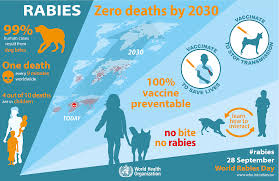
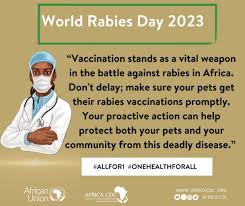
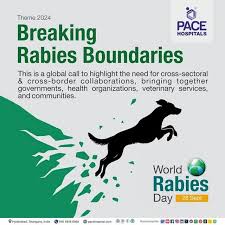

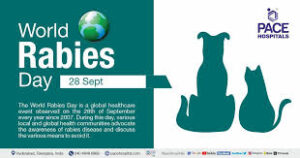


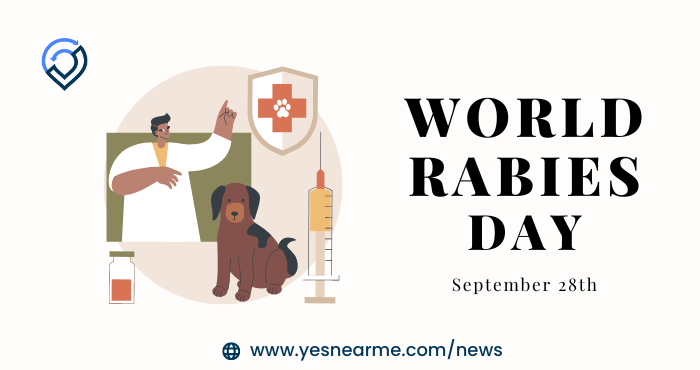





Recent Comments